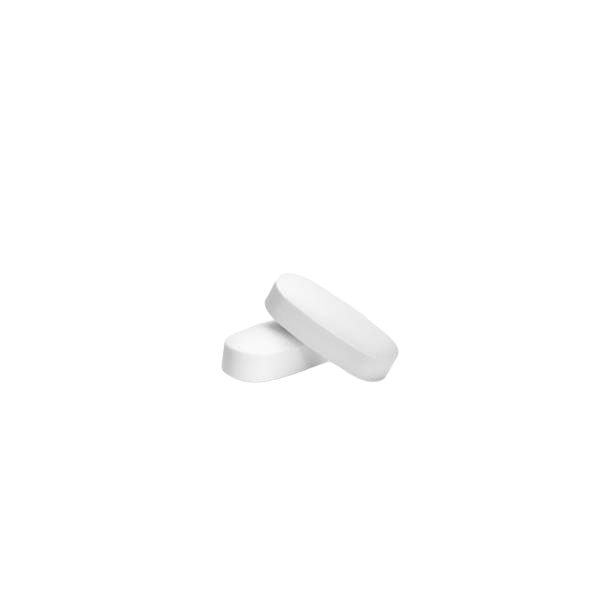
Polygel suspens. bottle 100.0 ml #1
Q: What are the active ingredients in Polygel Suspension?
Polygel Suspension contains Simethicone USP (50mg), Magnesium Hydroxide USP (250mg), and Dried Aluminium Hydroxide Gel USP (250mg) in each 5ml dose.
Q: What are the excipients in Polygel Suspension?
The excipients include Sodium Methyl Hydroxybenzoate BP, Sodium Propyl Hydroxybenzoate BP, Saccharine Sodium BP, Purified Water BP, Sorbitol Solution BP, Citric Acid Monohydrate BP, Polysorbate 80 BP, Bronopol BP, Levomenthol (Menthol) BP, Peppermint Oil BP, Xanthan Gum USP/ NF and Sodium Hypochlorite solution (dilute) (4%) BP.
Q: What are the color and flavor of Polygel Suspension?
Polygel Suspension is colored with Erythrosine & Tartrazine and flavored with Mint.
Q: How does Simethicone work?
Simethicone is an antifoaming agent that reduces flatulence by lowering surface tension. It allows small gas bubbles to coalesce into larger bubbles, making them easier to pass. It is chemically inert and has no known systemic effects.
Q: What is the primary function of Aluminium Hydroxide?
Aluminium Hydroxide acts as an antacid, neutralizing gastric acid. It also adsorbs pepsin at a pH above 3, delays gastric emptying, relaxes gastrointestinal smooth muscle, and promotes a mucosal barrier to acid by stimulating mucus secretion.
Q: How does Magnesium Hydroxide/Magnesium Aluminium Silicate Hydrate work?
It has a laxative action, often used in combination with Aluminium Hydroxide, which has a constipating action. Its insolubility allows for a prolonged antacid effect. Magnesium Hydroxide increases intestinal motility.
Q: What is Polygel indicated for?
Polygel is indicated for the relief of heartburn, sour stomach, symptoms of gas and stomach upset, hyperacidity associated with conditions like peptic ulcer, gastritis, peptic oesophagitis, and hiatal hernia. It also acts as an antiflatulent to relieve trapped gas symptoms, including postoperative gas pain.
Q: Who should not use Polygel?
Polygel is contraindicated in patients with a prior history of hypersensitivity to any of its components and in patients with renal failure.
Q: What is the recommended dosage for adults and children over 12 years old?
Adults and children over 12 years old should take 2-4 teaspoonfuls (10ml to 20ml) of the suspension, 4 times a day, or as directed by a physician. Higher doses may be needed for peptic ulcers.
Q: What is the recommended dosage for children 5-12 years old?
Children 5-12 years old should take half the adult dose.
Q: What are the most common adverse effects of Polygel?
The most common side effect is changes in bowel function, with diarrhea being the most frequent. A small reduction in dosage may alleviate these symptoms.
Q: What are the less common side effects of Polygel?
Constipation, stomach cramps, loss of appetite, vomiting, dizziness, and headache may occur rarely.
Q: What are the potential risks associated with Aluminum?
Aluminum can cause nausea, vomiting, and constipation. Large doses may cause intestinal obstruction. In patients on low phosphate diets, excessive or normal doses may lead to phosphate depletion, increased calcium resorption and urinary excretion, potentially resulting in osteomalacia.
Q: What are the potential risks associated with Magnesium?
Magnesium can cause diarrhea. Hypermagnesemia can occur in individuals with impaired renal function. Magnesium hydroxide and other magnesium salts can cause central nervous system depression in the presence of renal insufficiency.
Q: What are the precautions for pregnant and breastfeeding women?
Polygel is considered safe during pregnancy. However, caution should be exercised when administering Polygel to nursing mothers.
Q: How can Polygel affect other medications?
Aluminum and magnesium may affect the absorption of other medications from the gastrointestinal tract if administered concurrently. Polygel can reduce the activity of Fluoroquinolones, Isoniazid (oral), Iron, Indomethacin, Digoxin, Ketoconazole, and Phenothiazines. It may potentiate the effects of Mecamylamine and reduce the effect of Tetracyclines.
Q: What are the symptoms of Polygel overdose?
The most common symptom of overdose is diarrhea. In patients with severe renal impairment, there may be a risk of magnesium poisoning, manifested by dry mouth, dizziness, and respiratory difficulties including depression.
Q: What is the treatment for Polygel overdose?
Treatment involves gastric lavage, increased intestinal transit with laxatives lacking magnesium, and intravenous administration of calcium gluconate if magnesium intoxication symptoms are observed.
Q: How should Polygel Suspension be stored?
Polygel Suspension should be stored below 30°C, protected from sunlight, and kept out of reach of children.
Q: What are the different pack sizes for Polygel Suspension?
Polygel Suspension is available in 10ml, 50ml, 100ml, 120ml, and 200ml bottles.
Q: What are the NAFDAC and Zambia Lic. numbers for Polygel Suspension 100ml?
NAFDAC Reg. No.: A4-2694 Zambia Lic. No.: 075/006
Q: What is the method of sale for Polygel Suspension 100ml in Zambia?
GS
Similar products










